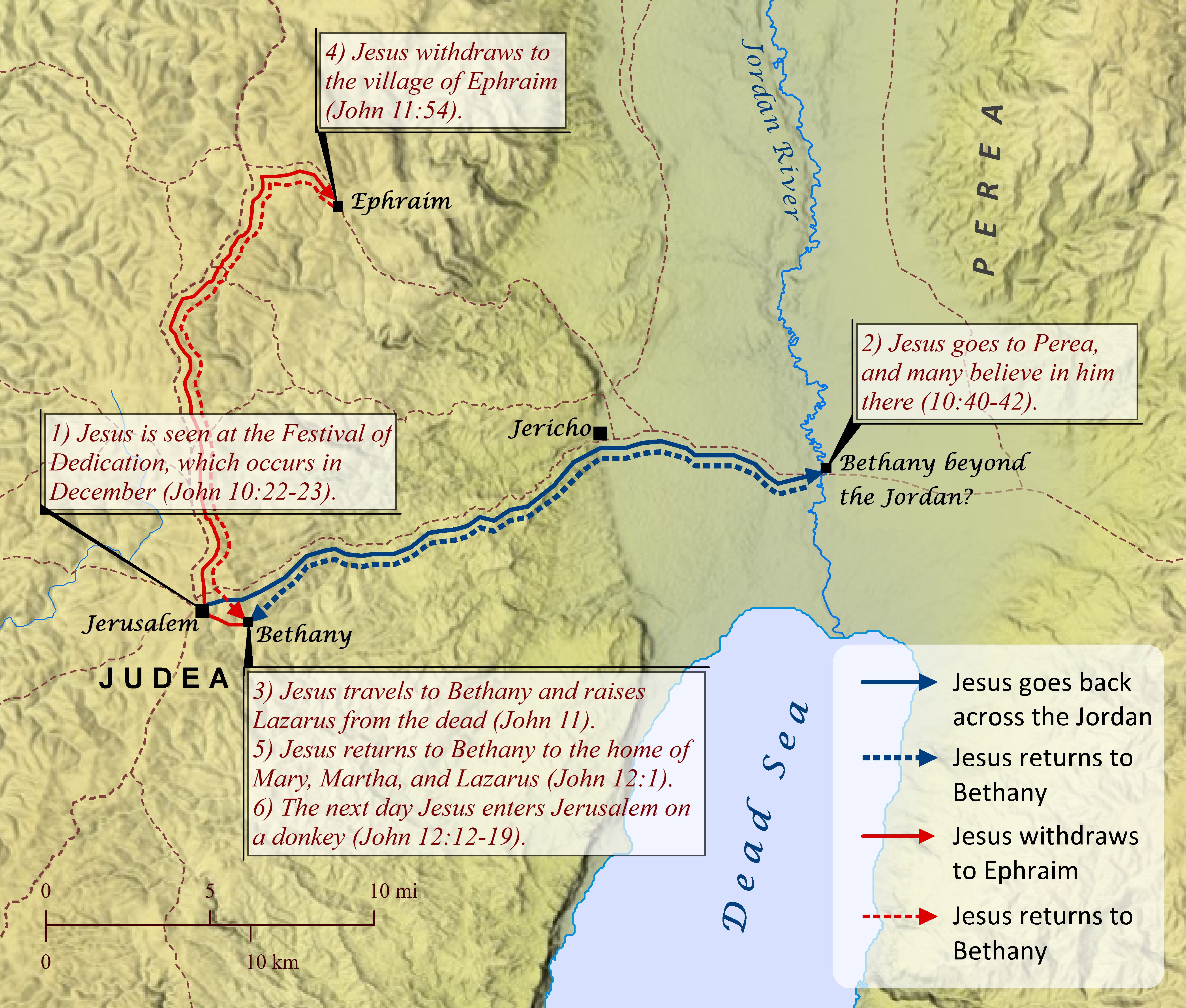Note: This view shows ‘verses’ which are not natural language units and hence sometimes only part of a sentence will be visible—click on any Bible version abbreviation down the left-hand side to see the verse in more of its context. Normally the OET discourages the reading of individual ‘verses’, but this view is only designed as a tool for doing comparisons of different translations—the older translations are further down the page (so you can read up from the bottom to trace the English translation history). The OET segments on this page are still very early looks into the unfinished texts of the Open English Translation of the Bible—please double-check these texts in advance before using in public.
AICNT So when Martha heard that Jesus was coming, she went and met him, but Mary remained seated in {the}[fn] house.
OEB When Martha heard that Jesus was coming, she went to meet him; but Mary sat quietly at home.
WEBBE Then when Martha heard that Jesus was coming, she went and met him, but Mary stayed in the house.
WMBB Then when Martha heard that Yeshua was coming, she went and met him, but Miriam stayed in the house.
NET So when Martha heard that Jesus was coming, she went out to meet him, but Mary was sitting in the house.
LSV Martha, therefore, when she heard that Jesus comes, met Him, and Mary kept sitting in the house.
FBV When Martha found out that Jesus was coming, she went to meet him, but Mary stayed at home.
TCNT When Martha heard that Jesus was coming, she went to meet him, but Mary remained seated in the house.
T4T When Martha heard someone say that Jesus was coming, she went along the road to meet him. But Mary stayed in the house.
LEB Now Martha, when she heard that Jesus was coming, went to meet him, but Mary was sitting in the house.
BBE When Martha had the news that Jesus was on the way, she went out to him, but Mary did not go from the house.
Moff Then Martha, hearing of the arrival of Jesus, went out to meet him, while Mary sat at home.
Wymth Martha, however, as soon as she heard the tidings, "Jesus is coming," went to meet Him; but Mary remained sitting in the house.
ASV Martha therefore, when she heard that Jesus was coming, went and met him: but Mary still sat in the house.
DRA Martha therefore, as soon as she heard that Jesus had come, went to meet him: but Mary sat at home.
YLT Martha, therefore, when she heard that Jesus doth come, met him, and Mary kept sitting in the house.
Drby Martha then, when she heard Jesus is coming, went to meet him; but Mary sat in the house.
RV Martha therefore, when she heard that Jesus was coming, went and met him: but Mary still sat in the house.
SLT Then Martha, when she heard that Jesus comes, met him: and Mary sat in the house.
Wbstr Then Martha, as soon as she heard that Jesus was coming, went and met him: but Mary sat in the house.
KJB-1769 Then Martha, as soon as she heard that Jesus was coming, went and met him: but Mary sat still in the house.
KJB-1611 Then Martha, as soone as shee heard that Iesus was comming, went and met him: but Mary sate still in the house.
(Modernised spelling is same as from KJB-1769 above)
Bshps Martha assoone as she hearde that Iesus was commyng, went and met hym: but Marie sate styll in the house.
(Martha as soon as she heard that Yesus/Yeshua was coming, went and met him: but Mary/Maria sat still in the house.)
Gnva Then Martha, when shee heard that Iesus was comming, went to meete him: but Mary sate still in the house.
(Then Martha, when she heard that Yesus/Yeshua was coming, went to meet him: but Mary sat still in the house. )
Cvdl Now wha Martha herde yt Iesus came, she wete to mete him. But Mary satt styl at home.
(Now what Martha heard it Yesus/Yeshua came, she went to meet him. But Mary satt styl at home.)
TNT Martha assone as she hearde that Iesus was comynge went and met him: but Mary sate still in the housse.
(Martha as soon as she heard that Yesus/Yeshua was coming went and met him: but Mary sat still in the house. )
Wycl Therfor as Martha herde, that Jhesu cam, sche ran to hym; but Mary sat at home.
(Therefore as Martha heard, that Yhesu came, she ran to him; but Mary sat at home.)
Luth Als Martha nun hörete, daß JEsus kommt, gehet sie ihm entgegen; Maria aber blieb daheim sitzen.
(As Martha now heard, that Yesus comes, goes they/she/them him in_contrast_to; Maria but stayed home sit.)
ClVg Martha ergo ut audivit quia Jesus venit, occurrit illi: Maria autem domi sedebat.
(Martha therefore as he_heard because Yesus he_came, occurrit them: Maria however domi sedebat. )
UGNT ἡ οὖν Μάρθα ὡς, ἤκουσεν ὅτι Ἰησοῦς ἔρχεται, ὑπήντησεν αὐτῷ; Μαρία δὲ ἐν τῷ οἴκῳ ἐκαθέζετο.
(haʸ oun Martha hōs, aʸkousen hoti Yaʸsous erⱪetai, hupaʸntaʸsen autōi; Maria de en tōi oikōi ekathezeto.)
SBL-GNT ἡ οὖν Μάρθα ὡς ἤκουσεν ὅτι Ἰησοῦς ἔρχεται ὑπήντησεν αὐτῷ· ⸀Μαρία δὲ ἐν τῷ οἴκῳ ἐκαθέζετο.
(haʸ oun Martha hōs aʸkousen hoti Yaʸsous erⱪetai hupaʸntaʸsen autōi; ⸀Maria de en tōi oikōi ekathezeto.)
RP-GNT Ἡ οὖν Μάρθα, ὡς ἤκουσεν ὅτι Ἰησοῦς ἔρχεται, ὑπήντησεν αὐτῷ· Μαρία δὲ ἐν τῷ οἴκῳ ἐκαθέζετο.
(Haʸ oun Martha, hōs aʸkousen hoti Yaʸsous erⱪetai, hupaʸntaʸsen autōi; Maria de en tōi oikōi ekathezeto.)
TC-GNT Ἡ οὖν Μάρθα, ὡς ἤκουσεν ὅτι [fn]Ἰησοῦς ἔρχεται, ὑπήντησεν αὐτῷ· [fn]Μαρία δὲ ἐν τῷ οἴκῳ ἐκαθέζετο.
(Haʸ oun Martha, hōs aʸkousen hoti Yaʸsous erⱪetai, hupaʸntaʸsen autōi; Maria de en tōi oikōi ekathezeto. )
Key for above GNTs: yellow:punctuation differs (from our SR-GNT base).
